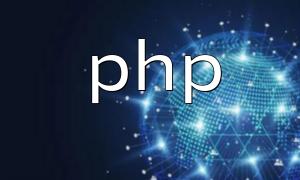Data visualization has become increasingly important in modern application development. FusionCharts, a powerful charting library, is widely favored by developers for its ease of use in displaying various data types. However, many developers encounter encoding problems when combining FusionCharts with PHP, especially when handling non-ASCII characters like Chinese. Such encoding errors affect user experience and may cause incorrect data transmission. This article will explain how to resolve FusionCharts encoding issues in PHP environments to ensure proper data display.
Encoding problems mainly stem from inconsistent character encoding settings. Whether in the database, PHP scripts, or frontend pages, mismatched encoding—especially involving Chinese characters—leads to garbled text. Therefore, ensuring uniform character encoding across all components is essential.
To avoid encoding issues, ensure the following areas use consistent encoding:
Add the following line in your PHP code to ensure output uses UTF-8 encoding:
<span class="fun">header('Content-Type: text/html; charset=utf-8');</span>
When fetching data from the database, explicitly set the connection charset to UTF-8 to avoid encoding problems during data transfer. For example:
// Using mysqli to connect
$connection = new mysqli('host', 'user', 'password', 'database');
$connection->set_charset('utf8');
<p>// Using PDO to connect<br>
$pdo = new PDO('mysql:host=host;dbname=database;charset=utf8', 'user', 'password');<br>
This ensures consistent character encoding at the database connection level, effectively preventing garbled characters.
When passing data to FusionCharts, use JSON format and apply PHP's json_encode function with the JSON_UNESCAPED_UNICODE flag to prevent Chinese characters from being converted to Unicode escape sequences:
$data = array('label' => 'Example', 'value' => 10);
echo json_encode($data, JSON_UNESCAPED_UNICODE);
To resolve encoding issues between FusionCharts and PHP, it is crucial to maintain UTF-8 encoding consistently in your database, PHP files, and HTTP headers. Additionally, use the JSON_UNESCAPED_UNICODE option when encoding data in JSON to ensure Chinese characters display correctly. Following these steps enables developers to effectively eliminate encoding problems and achieve smooth, accurate data visualization.









